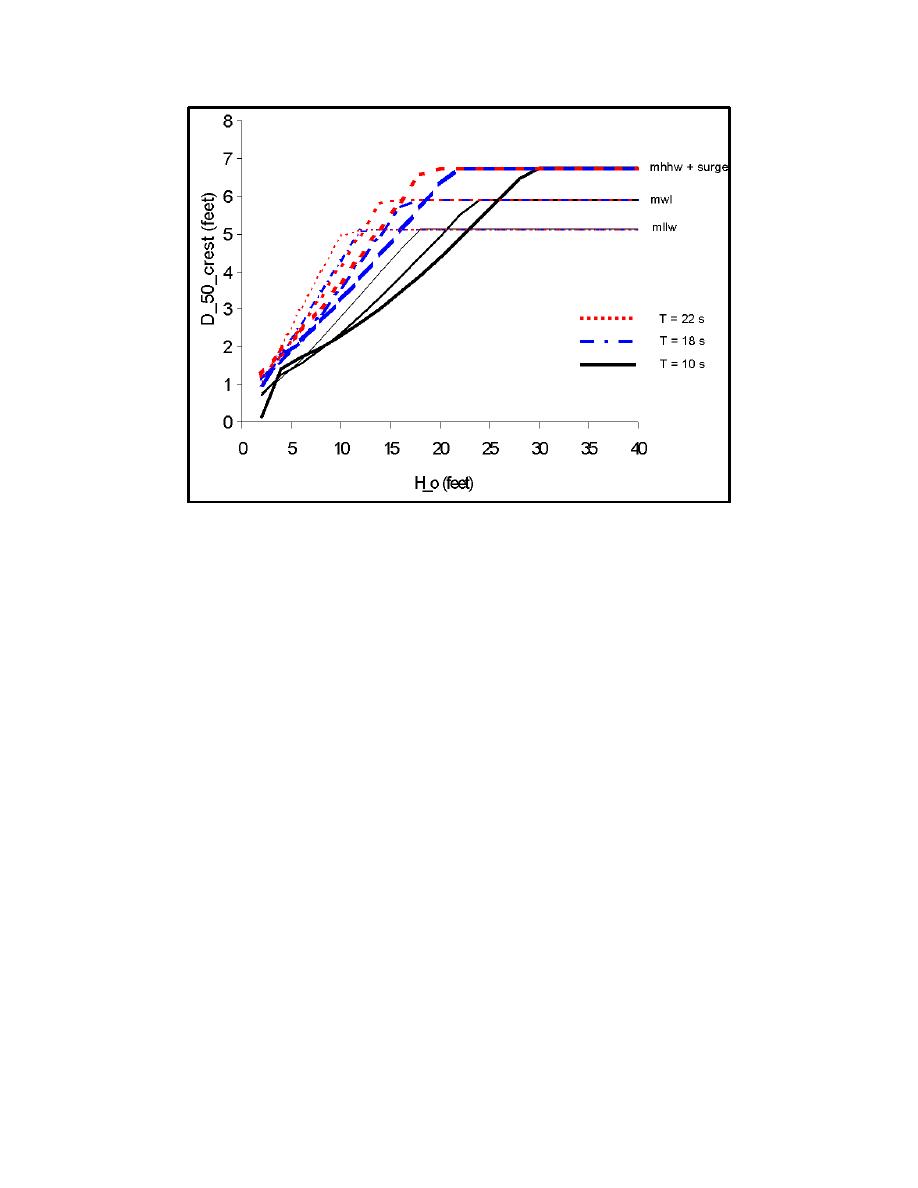
Figure A8.
Crest stone size required for a submerged breakwater as a function
of deepwater wave height for a range of wave periods and water
levels for case of Ocean Shores based on Vidal, Medina, and Martin
(2000) (m = 0.0265; Kd = 2)
Waves in deep water offshore of Grays Harbor range in significant height
between 1 and 10 m and have significant periods from less than 5 sec to almost
25 sec as confirmed by over 19 years of measurements at the CDIP wave buoy.
Applying the equations of Vidal, Medina, and Martin (2000) and for these
conditions suggests that the general range of stability numbers for submerged
structures is typically between 1 to 3, whereas the value for the stability number
for the proposed spur exceeds this range. Calculations of crest stone sizes for
conditions at north jetty following van der Meer and Pilarczyk (1990) and Vidal,
Medina, and Martin (2000) suggests stone diameter of at least 5-7 ft might be
required to achieve stability (Figures A7 and A8). However, considering the high
relative submergence at the end of the north jetty, and by considering a lower
structure side slope than is conventionally used (e.g., 7:1 or 5:1 instead of 1.5: 1
or 2:1) and perhaps a broader crest width, it may be possible to achieve a stable
structure using the smaller stone size. Furthermore, the north jetty environmental
conditions and submerged spur geometry are generally close to or just beyond
the limits of most experimental investigations of stability and structure
performance. Therefore, the possibility of achieving stability with a relatively
small stone size was the focus of a 2-D laboratory investigation at CHC.
A12
Appendix A
Stability Analysis of a Submerged Spur, North Jetty, Grays Harbor, WA



 Previous Page
Previous Page
